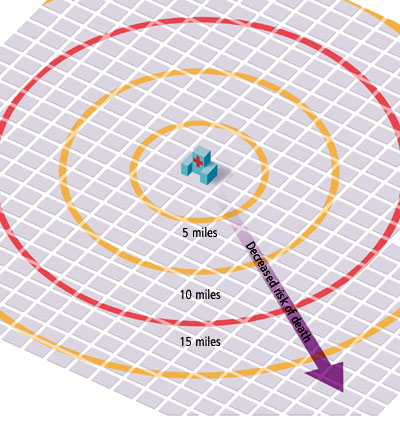 |
|
|||||||||
|
Going the Distance Cancer patients who travel more than 15 miles for treatment have one-third the risk of dying than patients who reside closer to their treatment centers. For every 10 miles a patient travels, death risk decreases by 3.2 percent. That’s according to a study led by Everett Vokes, chief of hematology and oncology at the University of Chicago Hospitals. Reported in the September 17 Journal of the National Cancer Institute, the study controlled for variables such as patients’ disease stage and economic status, leaving distance as the only measured factor correlating with mortality rates. Although the researchers found the result perplexing, Vokes speculates that distance from the treatment center may be a useful marker for some resources that cannot be assessed statistically, including awareness of alternative health-care options, personality traits such as compliance or motivation, or a supportive social network. The results confirm a notion that oncologists “have long appreciated,” Vokes says. Patients who explore therapeutic options tend to “fare better than those who end up at the closest place.”—J.N.L.
|
|
Contact
|


